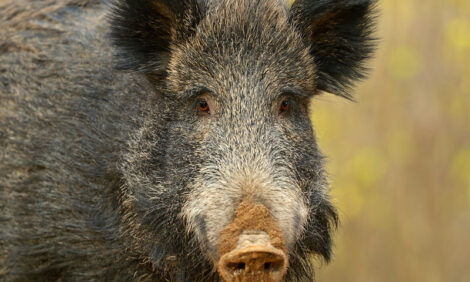



Dealing with Gilt Pool Management, Gilt Pool Size
CHINA - Overproduction drives up variable costs by reducing feed efficiency, herd health and poorer quality pigs, write Lorne and Vick Tannas, swine specialists and nucleus support for Genesus farms in China.Variation in production has shown to have a very great effect on costs and revenues. It is important to understand the drivers of that variation. Under production drives up fixed costs and reduces revenue by reduction in pigs to sell.
Overproduction drives up variable costs by reducing feed efficiency, herd health and poorer quality pigs shipped in order to close out each weeks’ production.
One of the biggest factors affecting barn flow is insufficient or variable gilt supply. Missing breeding target by under breeding or over breeding is in large part the result of not having the correct gilt pool for the farm.
How to determine breeding target?
If the farm is to market “X” (we will use 1,000) animals per week. The ability for the farm to ship more than 1,000 depends on the efficiency of the farm to ship excess of the target without affecting health, growth or feed efficiency.
If you have 3 square feet of space in the Nursery the farm may be able to ship in excess of 10 per cent (1,100 giving 2.7 square feet per pig in the nursery).
Same thing in the finisher if farm allows for 9 square feet in the finisher it may be able to market 10 per cent or 1100 at 8.1 square feet without compromising health, growth and feed efficiency. The farm would not be able to flow an excess of 20 per cent , that would leave 2.4 square feet and 7.2 square feet per pig and could greatly affect farm efficiency and drive up costs. We have already determined that anything below target X is not acceptable. So we only have to determine what the maximum acceptable level is for “X” (level above 1,000).
In this case we are going to use 1,000 as the lower level and 1,100 (10 per cent) as the upper level. The target then becomes 1,050 or 105 per cent . Acceptable lower level is 100 per cent and acceptable upper level is 110 per cent or five per cent above and five per cent below target for the barn flow.
Next we determine the number of animals bred per week: Pigs weaned per sow is at 11. Our target is 1,050. 1,050/11 = 95 sows. This is the number of sows to farrow each week. Our farrowing rate is 92 per cent . Sow 95/92 per cent =104 sows bred per week.
Next we use the replacement rate to determine gilts bred each week: Replacement rate is determined by the farms ability to keep an active efficient sow in the herd. Let’s use a replacement rate of 47 per cent . Litters per sow per year is also a sign of efficiency. Let’s use 2.4. 104 sows are mated per week, or 5,408 farrowings per year. 5,408/2.4 = 2,253 sows required in the sow herd. Replacement rate of 47 per cent is 2,253 x 47 per cent = 1,059 culls plus deaths per year or 20 per week.
The gilt pool is the number of mature breed able gilts required to have a minimum of 20 gilts cycling each week. 90 per cent of mature gilts with proper boar exposure will Cycle within 21 days. The problem is that they will not cycle evenly each week so an extra week’s worth of gilts is required to assure that 20 cycle on every week. The active gilt pool can never go below 4 weeks of breeding target or 80 head. After one week’s worth of gilts are bred (20 head) they need to be replaced by another 20 head of mature breed able gilts. Or if your gilt pool varies because larger groups are brought in at a time, never let the gilt pool go less than four times the gilt target breedings, below 80 head before the next group is brought in.
Target breeding is 104 per week with a window of 99 on the bottom end and 109 on the top of breedings each week. Anything out of this is unacceptable. If there are holes in the number of sows farrowing, you may require extra gilts to fill it. If there are excess sows farrowing breed less gilts or consider culling extra sows and maintaining gilt level and evening parity distribution.
Conclusion; Gilt pool is four times the number of gilts to be bred each week. The target breedings is five per cent above your acceptable shipping level. Never breed in access of the acceptable level of production five per cent above target. Never breed less than the minimum shipping level five per cent below target. Some farms may have to use less than five per cent and some may be able to use greater than five per cent. This must be determined by your farm and its ability to raise efficiently healthy markets.
You have control over the number of animals bred each week and maintaining good barn flow. Proper gilt pool management is how it is achieved.









